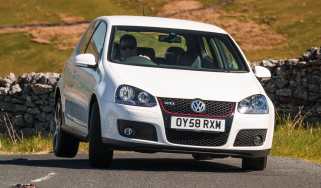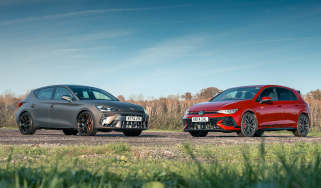Volkswagen Golf GTI (Mk4) – the car world's greatest misses
The Mk4 Golf was a classic piece of design, but the GTI version was barely warm, let alone hot

Those there at the dawn of evo in 1998 will tell you it was a truly special time for performance cars. And they’re right: from an abundance of relatively affordable roadsters and sports cars led by the likes of the Lotus Elise and Porsche Boxster, to rallying legends like the Subaru Impreza and Mitsubishi Evo, to spectacularly accomplished sports cars such as the Porsche 996 and Ferrari F355 that appeared in the very first eCoty, the era turned out some of this magazine’s favourite driver’s cars, ones that still captivate us even today.
One category is missing from that list, however: hot hatchbacks. With a handful of honourable exceptions, predominantly wearing Renault and Peugeot badges, the hot hatch had a torrid time during the 1990s, as car theft ran rampant and manufacturers scrabbled (perhaps even using the board game to assist) to find a combination of letters other than ‘GTI’ to dodge supercar-style insurance premiums.
> Volkswagen Golf GTI (Mk5, 2004-2009): review, specs and buying guide
Volkswagen never lost its faith in those letters, though the same couldn’t be said for the cars that bore them. The Mk3 Golf GTI arrived in 1992 and was something of a pudding; heavier and less eager than its predecessor. If hopes were higher for the Mk4 GTI that arrived in 1997, they were soon dashed with the news that the newcomer would pack a 2-litre 8-valver making – wait for it (and you’d be waiting a while) – 115bhp.
Granted, the 1149kg it had to haul along now seems very modest, but a performance car it was not. Refinement took precedence over precision and its 10.5sec 0-62mph time couldn’t even match the 1970s original. Sure, it was a lovely thing to behold – not especially sporty but handsome and pleasingly minimalist, with a cabin enlivened by a set of chunkily bolstered Recaros and soothing blue instrument lighting – but VW had forgotten the incantation for its GTI magic.
The badge on the back did its reputation no favours, either. VW launched a 150bhp turbocharged version almost concurrently, making the non-turbo car seem little more than a cynical attempt to court the Sloane set. The 1.8-litre 20-valve turbo four was much more like it, three whole seconds quicker to 62 than the 2-litre car, if still reined-in to avoid stepping on the toes of the VR5 and VR6-engined models.
And it was still a stretch to call it a hot hatch. Some observed that it was more GT than GTI – refined and well-finished enough to give the mechanically similar Audi A3 1.8T a hard time, but vital qualities like feedback, adjustability and involvement were notably absent. It still cocked an inside rear wheel in hard cornering, but that was more an indication of how much the body listed in corners than signs of a performance-car pulse.
Driving the (turbocharged) GTI in our 15-car hot hatch test in evo 020, we found it surprisingly fluent around Anglesey but unmemorable on the road, and its more vibrant cousin, the Seat Leon Cupra, comfortably pipped it to the test’s final six. There was latent potential in the platform that VW later discovered, first in 2001’s BBS-shod 25th Anniversary Edition and then in the glorious-sounding VR6-powered R32 of 2003, but it took until 2004’s Mk5 GTI for VW to prove the Mk1 and 2 weren’t just flashes in the pan.
This story was first featured in evo issue 330







